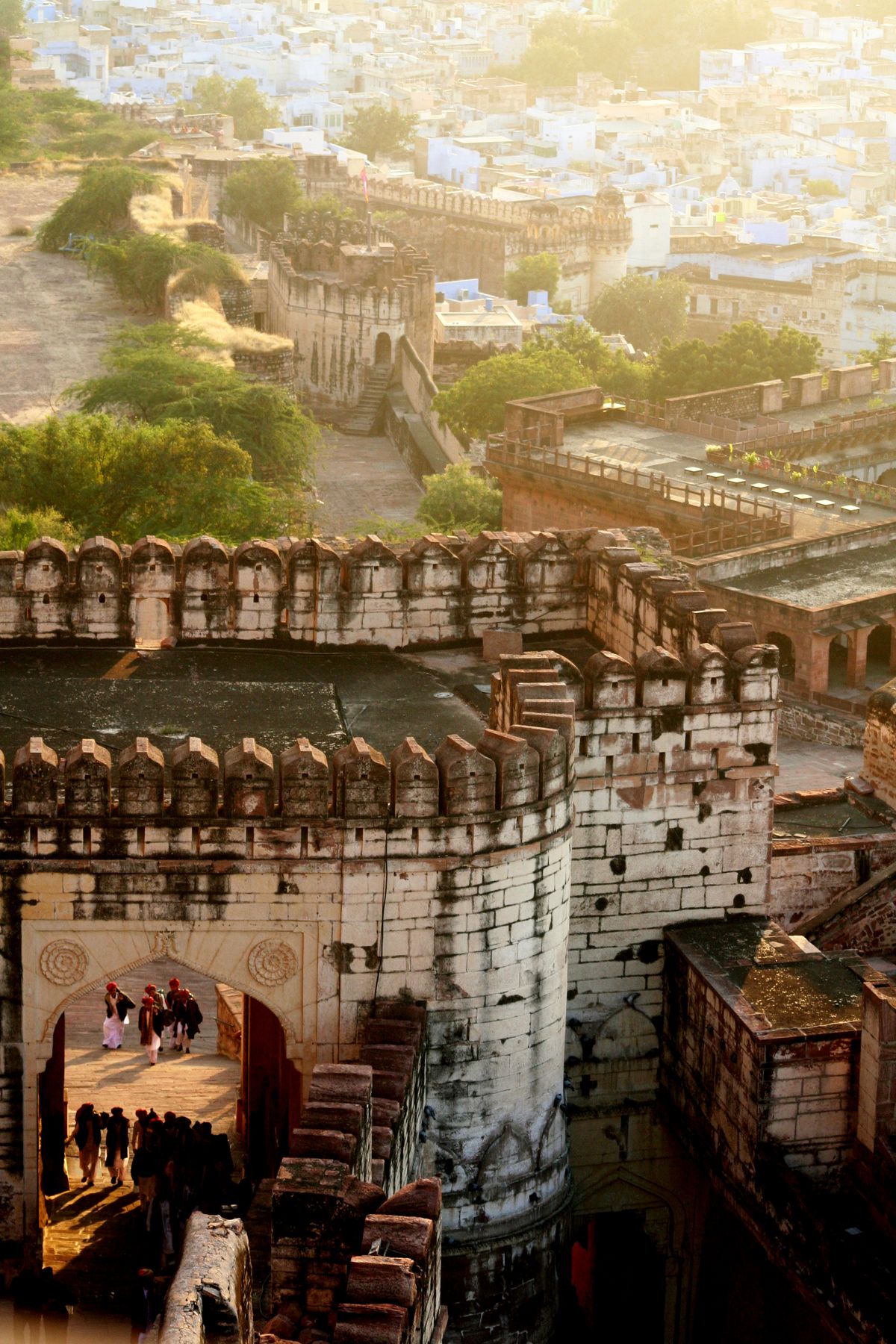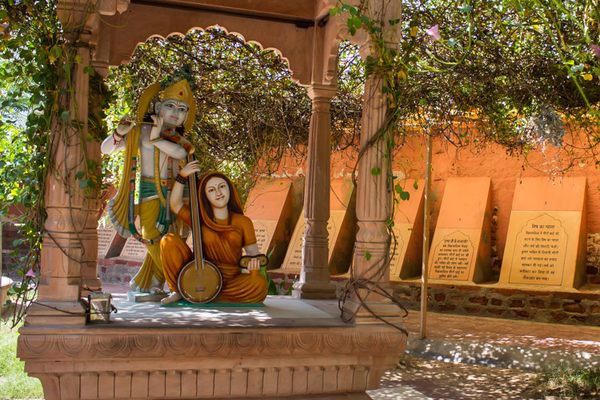About
One of the best-preserved and largest forts in India, the Mehrangarh Fort towers 400 feet above the city of Jodhpur. Founded in 1459 by Rajput leader Rao Jodha of the Rathore clan, it is owned and managed by the Jodhpur royal family to this day.
You can see the palatial hill fort from just about everywhere in the city, its distinctive walls soaring above the rocky plateau from which they were carved. Mehrangarh means “fort of the sun,” referring to the myth that the Jodhpur royal family descended from the sun god, Surya.
A visit to Mehrangarh Fort takes hours, and it’s worth every minute. Here, you can experience the history of war, the culture of honor, and the life of extravagance that Rajput royals enjoyed.
After the long walk from the city up to the fort (you can also take a taxi or rickshaw), you enter through the main gate, and continue to walk up a ramp through a series of seven gates. At a gate called Loha Pol, iron spikes are embedded in the wood (to prevent an elephant attack) and a set of small red hand prints on the wall memorialize a horrifying historic event. These are the handprints of the wives of Maharaja Man Singh’s widows, left there as they went to throw themselves on his funeral pyre in 1843.
Inside the fort, the royal palaces now serve as the Mehrangarh Museum. You can walk from one to another, through enclosed courtyards adorned with lattice work and charming balconies. The former palaces are filled with antiques, artifacts, and art works, and even complete rooms. You will find miniature paintings, palanquins, howdahs (elephant seats), textiles, weaponry, and household goods. One room houses a collection of elaborate royal cradles from the 17th century. In the former bedroom of Maharaja Takhat Singh, also known as the Sheesh Mahal (Hall of Mirrors), every inch covered in painted panels, carvings, tiles, and mirrors.
Related Tags
Know Before You Go
Open every day, 9 am to 5 pm. Foreign ticket price 600 rupees (with audio cassette), 400 rupees for students. Domestic ticket price 100 rupees, 50 rupees for seniors, students. The audio cassette, available when you buy your ticket, is highly recommended and includes a welcome and some family history from the current head of the Rathore clan, Maharaja Gaj Singh II.
Delhi and Rajasthan: Colors of India
Discover Colorful Rajasthan: From Delhi to Jaipur and Beyond.
Book NowPublished
July 30, 2018




































